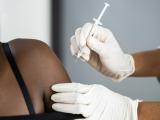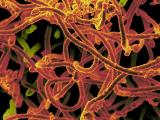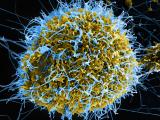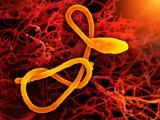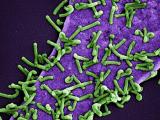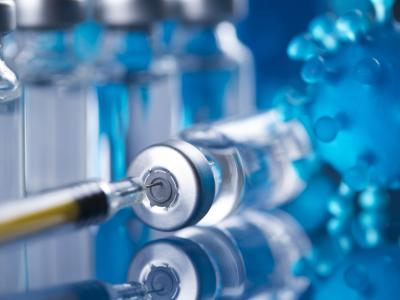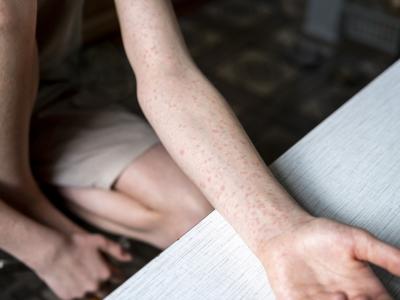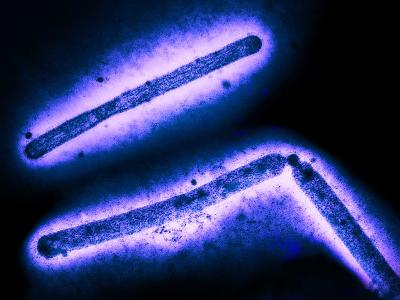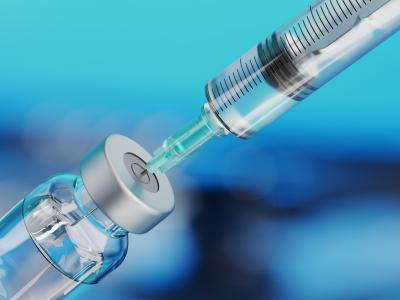In the ongoing debate over levels of quarantine for health workers returning from West Africa, President Barack Obama today said policies based on fear rather science and best practices could discourage volunteers from signing on to help battle the disease.
He said he would meet tomorrow with health workers who have worked in the region or are planning to travel there. Obama made the comments, his first public ones on the subject, in a short statement today on the White House's South Lawn, which was broadcast live by CBS News.
His remarks came hours after the second nurse infected with Ebola in Dallas was released from Emory University Hospital in Atlanta and as controversy still swirled over New Jersey's recent mandatory quarantine at a Newark hospital of a nurse from Maine who was returning from a Doctors without Borders (MSF) assignment in West Africa.
Kaci Hickox was kept in isolation against her will at a hospital over the weekend but was released yesterday to return home to Maine, which also has a mandatory quarantine policy. Her attorney said today she is at an undisclosed location while she works out details with Maine's health department, the Associated Press (AP) reported.
It's unclear if she has agreed to be quarantined or if a quarantine is in place, according to the report. She didn't have a fever, but she and her doctor said facial flushing led to an elevated temperature reading when it was taken with a forehead scanner after a few hours of being detained at the airport. Hickox has tested negative for Ebola.
Obama said he met with members of the US Agency for International Development (USAID) Disaster Assistance Response Team (DART), which Obama said has been on the ground since early August and serves as the backbone of the US response to the outbreak. Obama said the team reported some progress in Liberia, along with some infrastructure improvements.
"It's critical that we maintain that leadership," he said. "We don't want to discourage our healthcare workers from going to the front lines."
It's important to remember that only two people have contracted Ebola on US soil, Obama said, both of whom were nurses who helped care for the first US patient, Thomas Eric Duncan, a Liberian man who died from his infection at a Dallas hospital on Oct 8.
He added that it's important that the nation works together to make sure workers are willing and able to volunteer to help in West Africa, and that they are thanked and supported, while being monitored in a prudent fashion. "We want to make sure every policy put in place is supportive of their efforts."
New Jersey, New York, and a handful of other states have announced more stringent quarantine policies than revised recommendations announced by the US Centers for Disease Control and Prevention (CDC) yesterday. The CDC's recommendations are based on levels of risk, and for health workers returning from West Africa, the agency suggests more detailed active monitoring, tailored to each person's situation.
A handful of states, however, recently unveiled policies requiring mandatory quarantine for health workers who return from the three hardest-hit outbreak countries: Guinea, Liberia, and Sierra Leone. The announcements have been met with pushback from several medical professional groups.
Second nurse discharged from Emory
Meanwhile, Amber Joy Vinson, the second Dallas nurse infected with Ebola, left Emory University Hospital today, where she had been hospitalized since Oct 15.
The hospital said in a statement that a series of test by teams at Emory and the CDC show that she is free of the virus and that her discharge poses no public health threat. Bruce Ribner, MD, who directs Emory's Serious Communicable Disease United, which has now treated four Ebola patients, said the healthcare team is extremely pleased with Vinson's recovery. "We were inspired by her courageous attitude and the strong support of her family and health care colleagues in Dallas," he said.
In a statement she read at a hospital press briefing today, Vinson spoke of her faith in God and thanked her family and care team. She also thanked two health workers recovered from Ebola for donating convalescent serum to her and other patients. They are Kent Brantly, MD, and Nancy Writebol, both of whom were treated for their infections at Emory's special unit after they were infected while working as medical missionaries in Liberia.
"While this is a day for celebration and gratitude, I ask that we not lose focus on the thousands of families who continue to labor under the burden of this disease in West Africa," Vinson said.
Vinson flew to Ohio during her active monitoring period and before the infection in the first nurse, Nina Pham, was known. Vinson's fever began within hours of returning to Dallas, prompting flight passenger tracing and contact monitoring in Ohio. According to the latest update from the Ohio Department of Health, state public health authorities are monitoring 163 contacts, 3 of whom are quarantined.
The nurses' infections exposed gaps in hospital preparedness for Ebola and led to tighter CDC personal protective equipment (PPE) recommendations for health workers who care for Ebola patients.
Call for better PPE
In a related development, three doctors with the University of Iowa Carver College of Medicine's Department of Internal Medicine today said in an editorial that although improved federal recommendations should diminish the risk to health providers, they aren't enough—better designs and technologies are needed. The editorial, by Michael Edmond, MD, MPH, MPA; Daniel Diekema, MD, MS; and Eli Perencevich, MS, appeared today in the Journal of the American Medical Association (JAMA).
They wrote that clinical and microbiological features of Ebola infection should guide current recommendations, given how likely health workers are to be in contact with body fluids and how massively viral loads spike as patients get sicker. They said gowns and gloves should be assumed to be contaminated if the patient is vomiting and has diarrhea.
Removing PPE without touching the skin or underclothing is difficult without extensive practice, they wrote, and although new recommendations are likely to diminish the risk, PPE removal is even more complicated, the three doctors wrote.
"Some products provide excellent protections but are nearly impossible to remove without self-contamination," they said, noting that hoods, for example, could be redesigned to make them open and fall away from the worker to avoid touching skin.
Reengineering PPE is needed for health workers in hospitals as well as those in Africa's outbreak zones. "A novel approach to PPE that provides an impermeable fluid barrier that is both more comfortable and easier to don and remove would be a substantial step forward," they wrote.
Other developments
- Australia has banned visas from Guinea, Liberia, and Sierra Leone, the first developed nation to impose a broad travel ban, Reuters reported today. Australia has not reported any Ebola cases and has resisted sending health workers to help battle the disease in the outbreak region. Australia's government said the travel ban is a necessary safety precaution, but some global health experts criticized the move as politically motivated and an overreaction. Since early in the outbreak the World Health Organization (WHO) has urged countries not to impose travel restrictions, saying the measures could hurt the flow of materials and outbreak responders to the region and increase economic hardships on the countries.
- Public health teams are monitoring 82 people who had contact with Mali's first Ebola case-patient, a toddler who died from her infection last week, according to a Reuters report that cited WHO spokesman Tarik Jasarevic. He said three WHO officials were already on the ground helping the country with its preparedness against the disease, and five other experts on the way. So far no other Ebola infections have been detected, according to the report. The WHO said in its Oct 24 statement on the detection of Mali's first case that the situation was particularly worrisome, because the 2-year-old girl from Guinea had visible symptoms during several stops on her way to Keyes region, where she died.
- The geographic distribution of Ebola cases in West Africa's outbreak region has changed over the past month, according to a report in Morbidity and Mortality Weekly Report (MMWR) from the CDC's incident management epidemiology team and health ministries in Guinea, Liberia, and Sierra Leone. Counts are now highest in areas around Monrovia and Bong district in Liberia, Freetown and northwestern districts of Sierra Leone, and Macenta district in Guinea. In the month before, the main hot spot was in the areas where the three countries meet. The groups' incidence analysis shows the highest rates are in two districts of Guinea (Gueckedou and Macenta), five districts of Liberia (Bomi, Bong, Lofa, Margibi, and Montserrado), and four districts of Sierra Leone (Bombali, Kailahun, Kenema, and Port Loko).
- The WHO today welcomed Swiss regulatory approval for a trial of an experimental Ebola vaccine at Lausanne University Hospital, which clears the way for the vaccine to be used on 120 people. The trial involves the modified chimpanzee adenovirus vaccine (chAD3 ZEBOV), developed by the US National Institutes of Health (NIH) and GSK. Other trials of the vaccine are under way in Mali, the United States, and the United Kingdom. The WHO is also coordinating a trial of a second experimental vaccine that uses a vesicular stomatitis virus (VSV-ZEBOV), which will be tested in Switzerland at Geneva University Hospital.
- The US Food and Drug Administration (FDA) on Oct 25 announced emergency use authorization (EUA) for two BioFire Defense diagnostic tests to detect the Ebola Zaire virus in people with Ebola symptoms or in those who may have been exposed. The BioFire Defense FilmArray NGDA BT-E Assay is for use in labs designated by the Department of Defense, and the BioFire Defense FilmArray Biothreat-E is for labs certified to perform high-complexity tests. The EUA for the second test allows hospitals with certified labs to conduct a polymerase chain reaction (PCR) test for Ebola in-house without having to send the sample to an outside lab.
See also:
Oct 28 Emory University Hospital press release
Oct 28 JAMA viewpoint
Oct 28 Reuters story on Australian visa ban
Oct 28 AP story
Oct 28 Reuters story on Ebola in Mali
Oct 28 MMWR report
Oct 28 WHO statement on Swiss Ebola vaccine trial approval
Oct 25 FDA statement on Biothreat-E test
Oct 25 FDA statement on NGDS BT-E test


